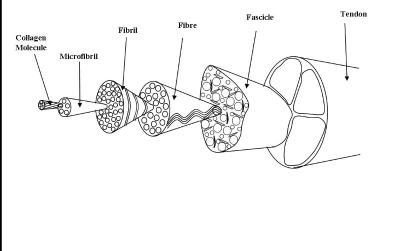- Home
- News
- General News
- Understanding tendons...
Understanding tendons at all levels
12-02-2010
Tendons are multi-level fibre composite materials that transfer muscle forces to the bones. They are made up of collagen and have a hierarchical structure. In daily activity, tendons modulate fluctuating physiological loads through a time-dependent mechanical response. This can relieve stress under constant strain (an effect called stress-relaxation) or increase strain under constant force. An international team of scientists has studied how this time-dependent response arises due to the structure of tendon through multiple levels of the hierarchy.
Share
Tendon injuries due to repetitive time-dependent motion are increasingly common, leading to pain and lack of mobility. These can be due to both sports and more sedentary activities like typing, which affects tendons in the hand. Despite the thorough study of this part of our body, from a structural perspective the mechanisms associated with the stress-relaxation activity at the micro and nanoscale are still not clearly understood.
Scientists from Queen Mary University of London (United Kingdom), the Max Planck Institute of Colloids and Interfaces (Germany) and the ESRF used time-resolved X-ray diffraction on the beamline ID2, along with confocal microscopy, to investigate how tendon structural units work together at different length scales.
 |
|
The hierarchical structure of tendons. Credits: H. Screen. |
The team found that the time-dependent behavior of tendons is controlled predominantly by the interfaces between fibrous units at multiple levels. This viscous interface is found at the nano-level (between fibrils), as well as between bundles of fibrils (fibres) at the micro-level. Interestingly at both the macro- and micro-levels, the internal structure of the fibrous units underwent a rapid internal rearrangement driven by the interfacial matrix dynamics. This has implications for understanding how injuries and trauma may affect the structure and influence cell response and repair through time-dependent mechanics.
Currently the team is working on linking these results to nanoscale fluid flow phenomena in tendons. They expect time-dependent fluid flow at multiple levels to modulate tendon gross-mechanics. Flow also is implicated in mechanoregulation and stimulation of cells. Linking time-dependent mechanics to mechanoregulation in this way may help them see how cells regulate matrix production in response to injury.
Reference:
Gupta H.S. et al, Journal of Structural Biology 169 (2010) 183-191.
Top image: An image of the Achiles tendon.



